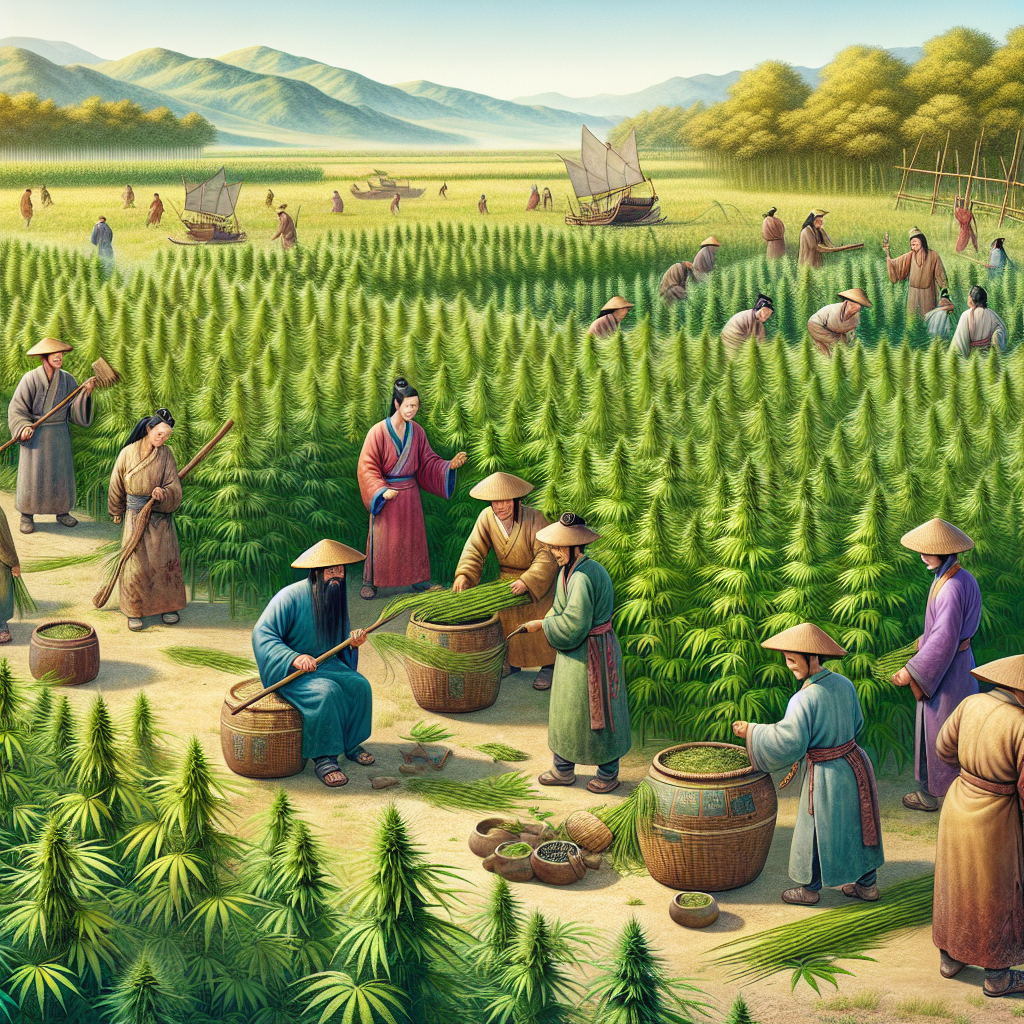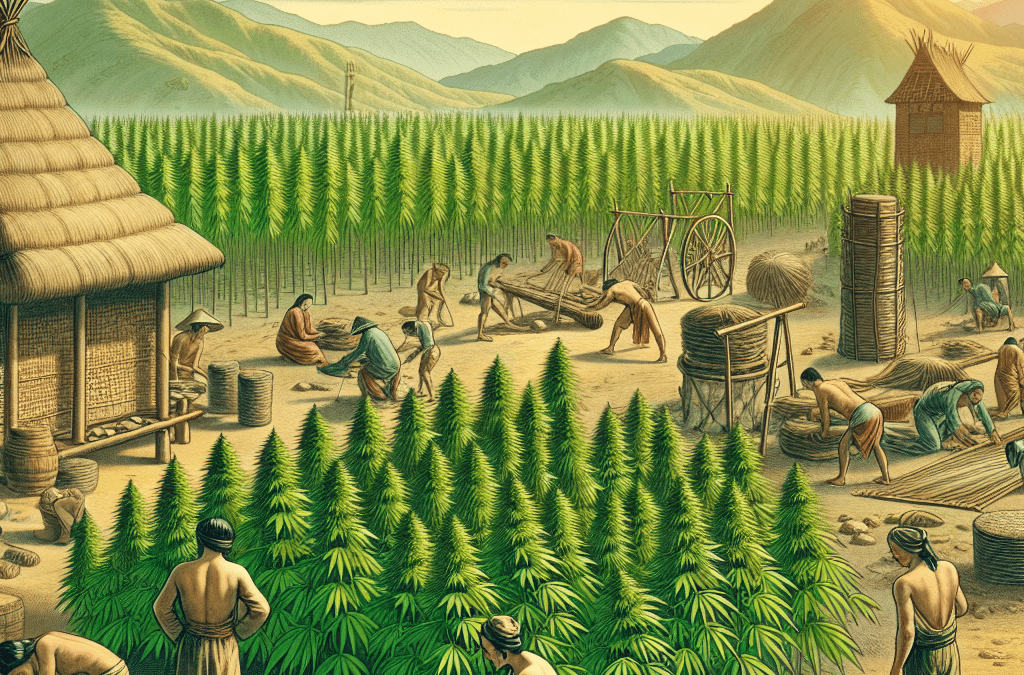When exploring the question, ‘hemp: where does it come from’, it’s essential to delve into its rich historical roots. Hemp, a variety of the Cannabis sativa plant species, has been cultivated for thousands of years. Originating from Central Asia, this versatile plant has traveled across continents, embedding itself in various cultures and industries.
The earliest evidence of hemp use dates back to ancient China, around 8,000 BC, where it was primarily used for fiber. Over the centuries, hemp made its way to Europe, Africa, and eventually the Americas. In ancient civilizations, hemp was revered for its durability and flexibility, utilized in everything from textiles to ropes and even early forms of paper.
Given its historical significance, understanding the origins of hemp not only highlights its past uses but also sets the stage for its modern applications. With the rise of products like Delta-8 vapes, hemp has experienced a resurgence in popularity.
Ready to dive into the world of Delta-8 products? Let’s start your Delta-8 brand with Smoke Show Labs today!
Historical Background of Hemp
The historical journey of hemp is as extensive and varied as the plant itself. From ancient civilizations to modern times, hemp has played a pivotal role in human development. The earliest records of hemp cultivation can be traced back to ancient China, around 8,000 BC. Archaeological findings suggest that hemp fibers were used to create some of the first known textiles, emphasizing the plant’s long-standing utility.
In ancient China, hemp was not only valued for its fiber but also for its seeds and oil. The Chinese utilized hemp seeds as a food source and its oil for medicinal purposes. This multifaceted use of hemp soon spread to neighboring regions. By 2,000 BC, hemp had reached the Middle East and later made its way to Europe and Africa, where it continued to flourish.
In Europe, hemp became an essential crop, particularly during the Middle Ages. It was extensively used for making ropes, sails, and textiles, which were critical for the burgeoning maritime industry. The plant’s resilience and versatility made it indispensable for explorers and traders during this era. Fast forward to the 16th century, hemp was brought to the Americas by European settlers, who recognized its value in agriculture and industry.
Throughout history, hemp has been intertwined with human advancement, contributing to various aspects of daily life, from clothing to construction materials. The plant’s historical background underscores its enduring importance and the potential it holds for future applications.
Geographical Roots of Hemp Cultivation

The geographical roots of hemp cultivation are widespread, reflecting the plant’s adaptability and versatility. Originating in Central Asia, specifically in regions that are now part of modern-day China and Mongolia, hemp’s journey across the globe has been extensive. Over millennia, hemp cultivation spread to different continents, each adapting the plant to local climates and needs.
In Asia, China remains one of the longest-standing cultivators of hemp, with records dating back thousands of years. The plant was revered not just for its industrial uses but also for its medicinal properties. Similarly, in India, hemp has been cultivated for centuries, playing a crucial role in traditional Ayurvedic medicine and religious rituals.
Hemp’s spread to Europe occurred through the ancient trade routes, including the Silk Road. By the early Middle Ages, hemp was a staple crop in many European countries. France, in particular, became a significant hub for hemp cultivation, producing high-quality fibers used in making ropes and textiles. Italy also had a strong hemp industry, especially known for its durable canvas fabrics.
The introduction of hemp to the Americas marked a significant expansion of its geographical roots. Brought by European settlers in the 16th century, hemp quickly became an essential crop in the New World. In the United States, states like Kentucky and Virginia were prominent centers of hemp production during the 18th and 19th centuries.
Today, hemp is cultivated globally, with major production centers in Canada, China, and various European countries. The plant’s ability to grow in diverse climates—from temperate to tropical—ensures its continued relevance and potential for future agricultural development.
Traditional and Modern Cultivation Methods

Hemp cultivation methods have evolved significantly over the centuries, blending traditional practices with modern agricultural techniques to optimize yield and quality. Traditional cultivation methods often relied on manual labor and natural growing conditions, while modern methods incorporate advanced technology and scientific research.
In traditional hemp farming, seeds were sown by hand, and the crops were often grown in small fields or communal plots. These methods emphasized the use of organic fertilizers and natural pest control, such as crop rotation and companion planting. For instance, in ancient China and India, farmers practiced intercropping, growing hemp alongside other crops to improve soil health and reduce pest infestations. Harvesting was also done manually, with workers using simple tools like sickles to cut the stalks.
Modern cultivation methods have transformed the way hemp is grown, making it more efficient and scalable. Mechanized equipment, such as seed drills and combine harvesters, streamline the planting and harvesting processes, significantly reducing labor costs and time. Advanced irrigation systems, including drip and sprinkler irrigation, ensure that hemp plants receive consistent water supply, optimizing growth and yield.
Furthermore, modern hemp farms often employ precision agriculture techniques. These include the use of GPS technology, drones, and sensors to monitor soil conditions, moisture levels, and plant health. Such data-driven approaches enable farmers to make informed decisions about fertilization, pest control, and harvesting, ultimately enhancing productivity and sustainability.
Another significant advancement in modern hemp cultivation is the development of specialized hemp strains. Through selective breeding and genetic research, scientists have created strains that are tailored for specific uses, such as high-CBD content for medicinal purposes or strong fibers for industrial applications. These specialized strains can also be more resistant to diseases and pests, further improving crop reliability.
While traditional methods laid the foundation for hemp cultivation, modern techniques have propelled the industry into a new era of efficiency and innovation. By combining the best of both worlds, farmers can ensure the sustainable growth of this versatile and valuable crop.
Global Significance of Hemp Production

Hemp production holds substantial global significance, impacting various sectors from agriculture to industry, and even environmental sustainability. Historically, hemp has been a vital crop in numerous cultures, providing essential materials for food, textiles, and medicines. Today, its importance continues to grow, driven by its diverse applications and environmental benefits.
One of the primary reasons for hemp’s global significance is its versatility. Hemp fibers are used to produce a wide range of products, including textiles, paper, biodegradable plastics, and construction materials. The seeds and oil are rich in nutrients, making them valuable for food products, supplements, and cosmetics. Additionally, hemp-derived cannabinoids like CBD are gaining popularity in the health and wellness industry for their potential therapeutic benefits.
Economically, hemp production is becoming increasingly valuable. Countries such as China, Canada, and the United States are major players in the hemp industry, exporting raw materials and finished products worldwide. This growing market provides economic opportunities for farmers and businesses, contributing to rural development and job creation. The global hemp market is projected to continue expanding, driven by rising consumer demand and favorable regulatory changes.
Environmentally, hemp cultivation offers numerous benefits. Hemp plants have a fast growth cycle and can be grown in a variety of climates, making them a highly sustainable crop. They require less water and fewer pesticides compared to other industrial crops like cotton. Moreover, hemp plants improve soil health by replenishing nutrients and preventing erosion. They also sequester carbon dioxide, helping to mitigate the effects of climate change.
The global significance of hemp production extends to its potential for innovation and sustainability. Researchers and entrepreneurs are continuously exploring new ways to utilize hemp in cutting-edge technologies and green solutions. From biofuels to eco-friendly packaging, hemp is paving the way for a more sustainable future.
In summary, the global significance of hemp production lies in its economic, environmental, and innovative potential. As the world continues to seek sustainable and versatile resources, hemp stands out as a crop with immense promise and profound impact.
Future Prospects and Innovations in Hemp Industry

The future of the hemp industry is incredibly promising, with ongoing innovations and new applications emerging at a rapid pace. One of the most exciting areas of development is in the field of biotechnology. Scientists are exploring ways to genetically modify hemp plants to enhance their yield, resistance to pests, and adaptability to various climates. These advancements could revolutionize hemp farming, making it even more sustainable and profitable.
Another significant innovation is in the realm of **bioplastics**. As the world grapples with the environmental impact of traditional plastics, hemp-based biodegradable plastics offer a sustainable alternative. Companies are investing in research to develop hemp composites that can be used in packaging, automotive parts, and even consumer electronics. These materials not only reduce reliance on fossil fuels but also decompose more naturally, lessening environmental pollution.
In the construction industry, hemp is making waves through the development of *hempcrete*, a sustainable building material that combines hemp fibers with lime to create a strong, insulating, and carbon-negative alternative to traditional concrete. Hempcrete buildings are energy-efficient and have a lower environmental footprint, making them an attractive option for eco-conscious builders and developers.
The health and wellness sector continues to be a significant driver of growth for the hemp industry. Innovations in extraction and formulation techniques are leading to more potent and effective hemp-derived products, such as CBD oils, topical creams, and dietary supplements. As research into the therapeutic benefits of cannabinoids progresses, we can expect to see a broader range of hemp-based health products hitting the market.
Moreover, the regulatory landscape for hemp is evolving. Many countries are revisiting their policies to encourage hemp cultivation and research, recognizing its economic and environmental benefits. These regulatory shifts are likely to spur further investment and innovation in the industry.
In conclusion, the hemp industry is on the cusp of a transformative era, driven by scientific advancements, sustainable practices, and changing regulations. As we look to the future, the potential for hemp to contribute to a more sustainable and prosperous world is immense. If you’re inspired by these exciting prospects and want to be part of this burgeoning industry, let’s start your Delta-8 brand with Smoke Show Labs. Join us in pioneering the future of hemp innovation.

